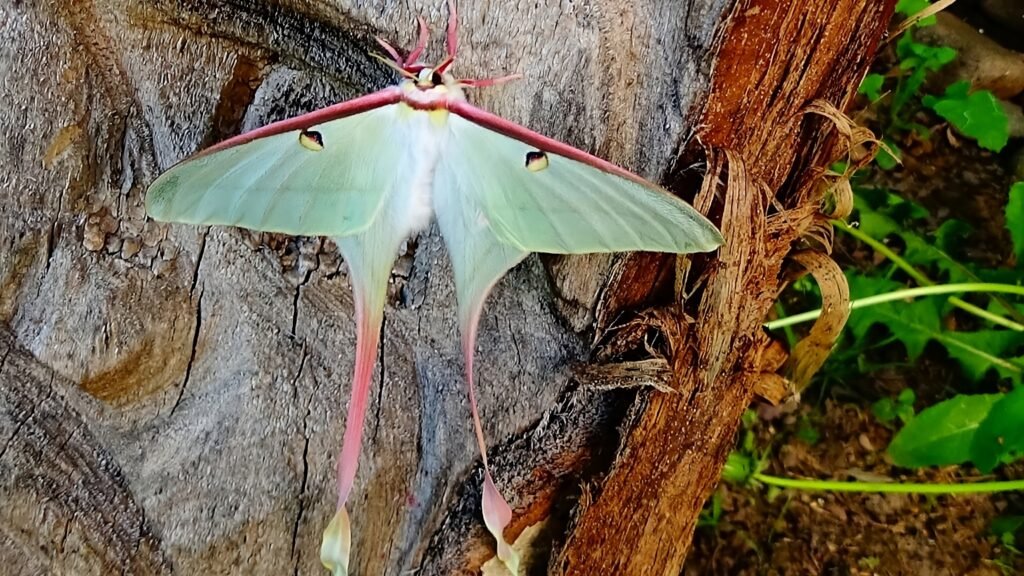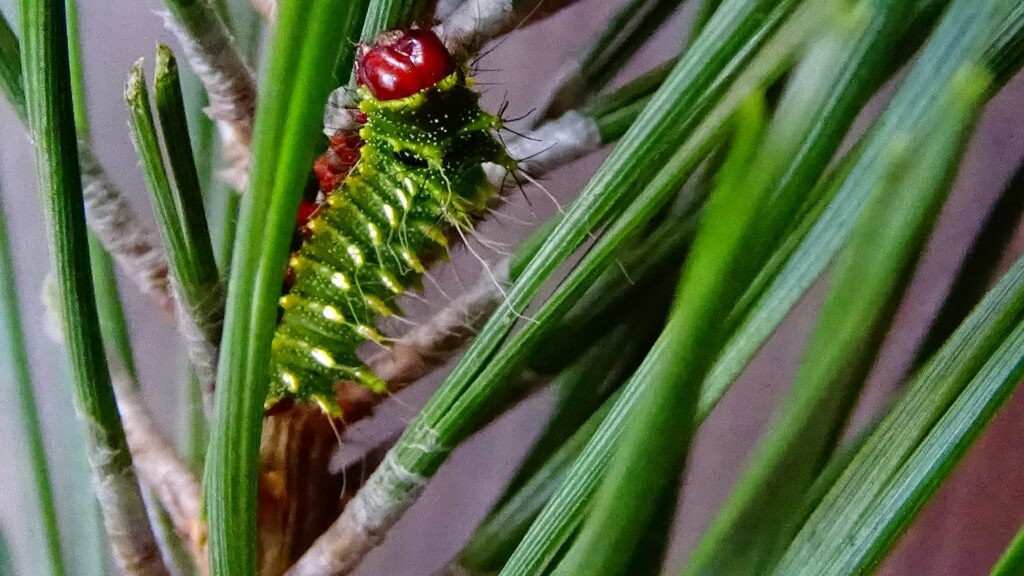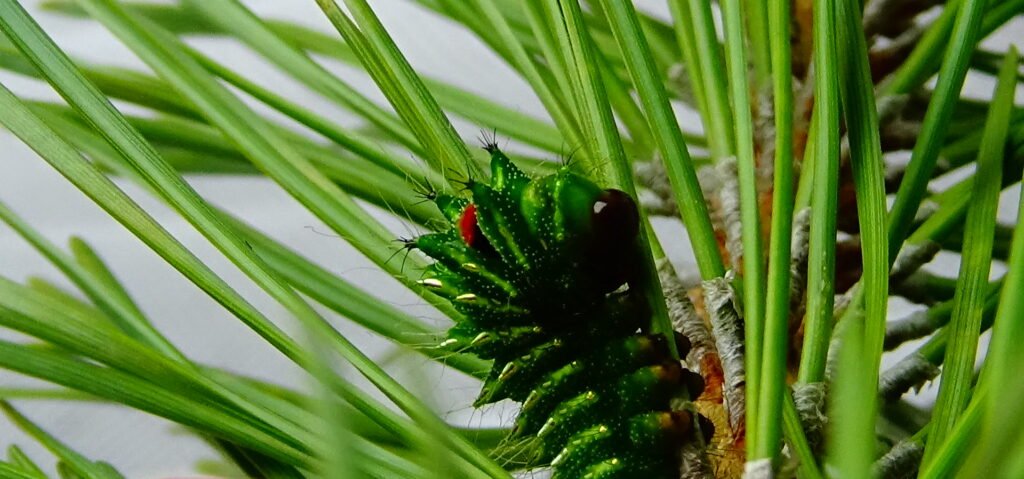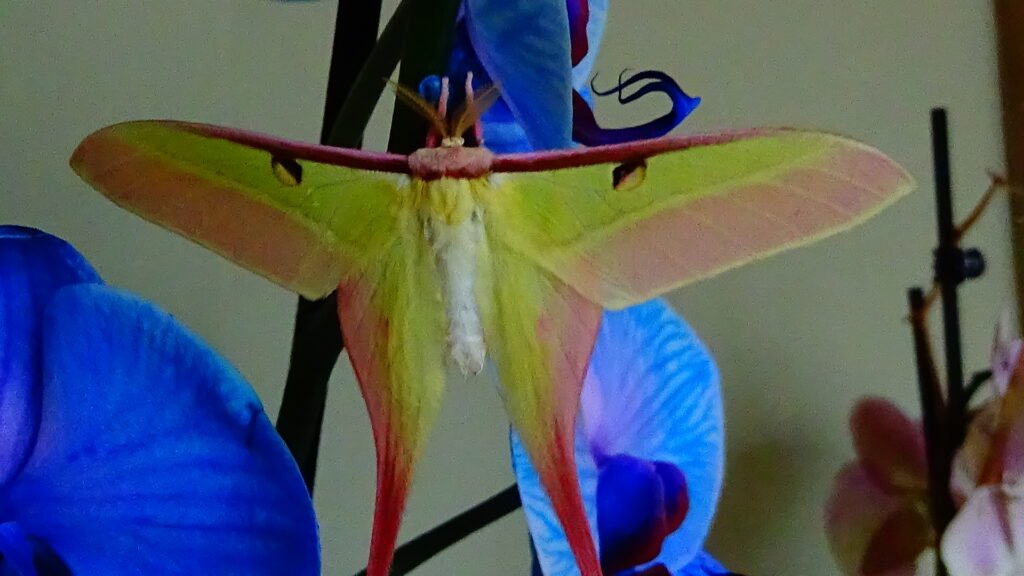(Oberthür, 1897)
Occurrence: China, Vietnam, Burma, Laos.
Biotope: Mountain pine forests.
Food plants: Pinus, Larix, Pseudotsuga (p.nigra, p.sylvestris, p.massoniana, p.strobus)
Voltinism: MultivoltineHowever, cocoons can survive the summer (estivation) and hatch in the cooler months.
Pupation: Caterpillars spin a cocoon
Difficulty: A difficult species, lot of breeders struggle with rearing them so would not recommend this one for beginners

Actias dubernardi is a wonderfully beautiful species from the genus Actias. A characteristic feature of these moths are the typical long tails on their hind wings.
The imago of this species stands out with its vibrant colors and striking sexual dimorphism. Females are pale green, with their tails beginning to pinken. Males of this species are very different in color, being light pink with a yellowish belly and surroundings.
They occur in some parts of China, high in pine forests. They prefer moist and cool environments, although they can also withstand higher temperatures. When raising caterpillars at higher temperatures, the margin is thin, and caterpillars can easily die if the temperature rises too high, hence it is recommended to rear them in a cooler environment.
Development takes longer due to the cooler environment, roughly one and a half to two months. I personally prefer to rear caterpillars in cooler places, such as a cellar, and despite the longer development, success is more likely. Breeding is more demanding, and for this reason, I would recommend this species for more experienced breeders.
Caterpillars can be reared until they spin their cocoon in plastic boxes, where the size of the enclosure is increased as the caterpillars grow and the food is changed every other to every third day.Temperature, humidity, and overall conditions in the plastic boxes remain constant and thus are under control. Eggs need to be moistened occasionally, as they would be in their natural environment, which is consistently humid. The eggs hatch in approximately 2-3 weeks, depending on the temperature.
L1- After hatching, caterpillars consume the shell of the egg and then move to the food source, which are coniferous trees. The best verified source for rearing caterpillars is the Scots pine (Pinus sylvestris) or black pine. (Pinus nigra).
In the first instar, caterpillars are very small, entirely black in color, and have small black spines all over their body.
It is important to maintain cleanliness, constant humidity, and temperature throughout the entire rearing process.
For easy and practical cleaning and also for maintaining humidity, either for this species or others, it's possible to place paper towels at the bottom of the enclosure.
At the beginning, it's good to clean the enclosure every day to prevent the accumulation of caterpillar droppings, which could potentially lead to mold formation and the spread of viral diseases.
In this phase, the caterpillars are very small and may struggle to bite through the tough needles. We can help them by cutting the tips of the needles with scissors, making the ends of the needles cut and easier for the caterpillars to feed on. However, it's important to be cautious that if we leave a pine cutting with trimmed ends too long in the enclosure without replacing it with fresh ones, mold can develop on the ends. Pine lasts a long time without water, stays fresh and green, and does not dry out quickly, but despite this, it's necessary to change the food every 2-3 days at the beginning. Trimming the needles is only necessary in the first two instars. Humidity is needed, but not too much, as excessive moisture can cause death.

L2- Caterpillars change color to dark red, in places even to a soft orange, and are very conspicuous against the green needles.
The rearing process remains the same. Occasionally, it is very helpful to leave the caterpillars open for air exchange. For sufficient moisture, it suffices to spray water on the paper towels a few times with a spray bottle, but never directly on the caterpillars' food.
It happens that a few caterpillars may die at the beginning, regardless of the conditions.

L3- Caterpillars become green in color with dark red legs and head, and have long white hairs. They also have metallic structures on their segments, which shimmer to a silver color in the light.
In this phase, they no longer have trouble biting through the needles even without trimming.

L4- In this phase, the caterpillars slowly begin to increase in size. Beautiful white-gray spots appear all over their body.

L5- Caterpillars start to gain weight and also consume a lot of food. It's important to change the food more frequently than before. This instar is also the last, meaning that they will form cocoons in this phase.
The appearance is similar to the previous two phases except that the colors are much more vivid and vibrant.
Before pupating, caterpillars empty the contents of their bodies in the form of liquid feces and significantly change their color to a gray shade. This is how you can tell that they will soon form cocoons. They begin to move restlessly around the enclosure and find a place to spin their cocoon. For pupation, we can offer the caterpillars sphagnum moss to replicate natural conditions, although they will pupate even without it.

From the caterpillar in the cocoon emerges a pupa, which will only overwinter if it is placed in a cool environment. If left to incubate at room temperature, the imago will hatch in one to two months.
Cocoons need to be moistened frequently until they hatch. A common problem in storing cocoons is that they are often placed in mesh enclosures, as with most species, but for this species, it is best to place them in a plastic box and set them on top of a substrate such as vermiculite or dried sphagnum moss. They must be kept at high humidity to prevent the cocoons from drying out. The plastic box will maintain sufficient moisture unlike a mesh enclosure. However, it's important to place an object in the box for them to climb on and stretch their wings upon emerging. Mating is straightforward; simply keep the imago at room temperature in a calm place and do not disturb the butterflies, or they can be placed in a mesh enclosure outside during a warmer evening where they will readily start mating due to air circulation.

